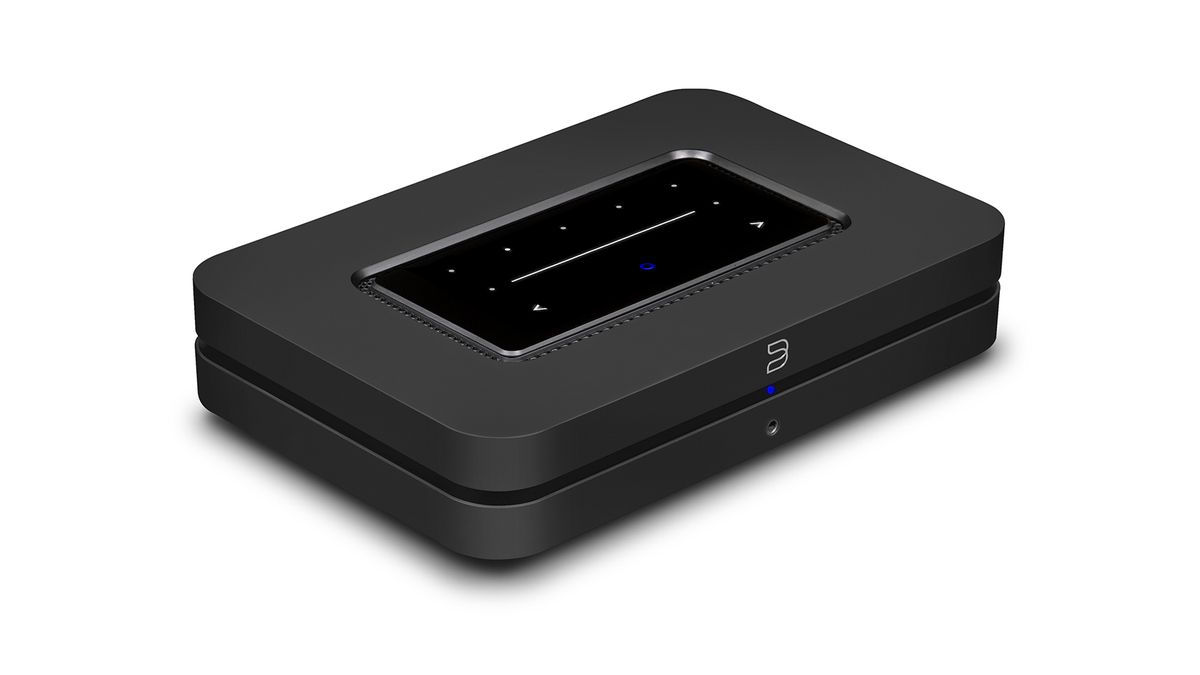What Hi-Fi? Verdict
The third-generation Node is one of the most appealing ways to add network streaming to your hi-fi system on a budget
Pros
- +
Infectious sense of rhythm
- +
Dynamically expressive
- +
Generous wireless and wired connectivity
Cons
- -
No supplied physical remote
Why you can trust What Hi-Fi?
UPDATE: This Bluesound Node has now been replaced by a newer version launched in 2024. You can read our Bluesound Node (2024) review for a lowdown on that latest affordable streamer (or our review of its even more entry-level Bluesound Node Nano), or check out our guide on the best music streamers available now. Alternatively, you can scroll down to read our original Bluesound Node review.
Bluesound has opted for less is more in the naming of its third-generation music streamer, returning to the original ‘Node’ moniker after its second-gen model carried the indicative ‘Node 2i’ label. But in a surprise to no one who is familiar with the multiroom audio specialist, the Canadian brand hasn’t subscribed to such austerity where feature-set and value are concerned.
Like the two Nodes before it at their time of arrival in 2014 and 2018 respectively, the new Node for 2021 enters the surprisingly sparse budget music streamer market with plenty of up-to-date, all-round appeal – and that much is evident before you even plug the thing in and hear what it can do.
Features
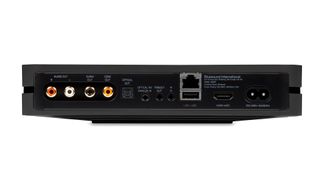
BluOS – that is, Bluesound’s proprietary multi-room wireless streaming platform – is a given for networked Bluesound gear and, increasingly, streaming products from its sister brand NAD and partner firms such as Dali. So we get a reassuring feeling of business as usual when we first power up the Node, hook it up to our network via an Ethernet cable, and open the BluOS app on our iPad to find the Node instantly identified as a ‘device’, ready and raring to go.
From here, local and networked libraries, streaming services and internet radio stations can be accessed for playback; multi-room partnerships with up to 63 other BluOS-compatible products can be established and controlled; and presets for easy access to your favourite sources and music can be allocated.
Those who don’t have music stored on their network and who don’t subscribe to a streaming service can still benefit from the Node’s wireless nature through its support for Apple AirPlay 2 and aptX HD Bluetooth (which is two-way, meaning it can wirelessly receive Bluetooth files for playback and also send whatever it is playing to Bluetooth headphones or speakers).
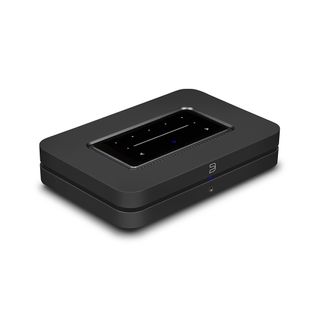
Inputs Mini TOSLINK/3.5mm Stereo combo, HDMI eARC
Outputs RCA, coaxial, optical, subwoofer, 3.5mm
Bluetooth aptX HD
AirPlay 2 Yes
Dimensions 22 x 4.6 x 14.6cm
Weight 1.1kg
Finishes 2 (Black or white)
The BluOS app also steps in for general playback controls for those who don’t want to splash out on the optional Bluesound RC1 remote control (£49, $59, AU$99), bother programming their own IR remote, or initiate voice control via the Alexa and Google Assistant BluVoice skills. Naturally, the app also lets you switch between sources – both of a wireless and physical nature. The latter comprises mini optical/3.5mm combo and HDMI eARC inputs for connecting audio sources or a TV, plus a range of outputs that includes RCA, coaxial, optical and subwoofer. A 3.5mm headphone jack can be found in the middle of the front panel, below the Bluesound logo, too.
The digital connections are fed by an all-new DAC that supports both hi-res 24-bit/192kHz and MQA files, the latter handy for subscribers of Tidal’s Hi-Fi tier who have access to MQA-powered hi-res Tidal Masters streams. Bluesound has also brought the Node into the third generation by packing in more powerful processors, an important part of the internal architecture for a multifaceted digital product like this.
Design
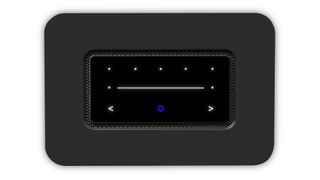
Considering their multi-tasking, software-reliant nature, it’s important for networked products to have a stable platform and app to operate within – and Bluesound’s offering is up there with the best. The Node does, however, offer some on-unit control that might prove handy if it’s positioned within easy reach in a room.
The Node’s compact chassis, which is comparable to the size of a wireless router or hardback book and diminutively but distinctly ‘Bluesound’ in its design, has a touch-capacitive top panel. From here you can change volume with a swiping action across a slider, skip tracks or initiate one of five pre-allocated presets by tapping small dot and arrow symbols, which thanks to a proximity sensor only light up on the otherwise-discreet touch panel when you approach it, disappearing after 10 or so seconds. They do the job for the minority who will regularly use them, although our biggest wish – whether reasonable or not for a streamer at this price point – would be a proper screen display.
Sound
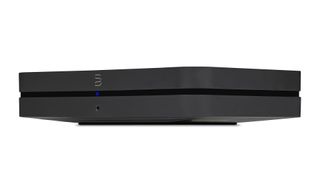
The Node’s closest rivals, the new Cambridge Audio MXN10 (£449 / $499 / AU$899) and the older Audiolab 6000N Play, the latter of which knocked the Node 2i off its pedestal in a previous What Hi-Fi? Awards season, don't have displays either. But as we position them next to one another in our test room, we soon realise similarities are harder to find between their sonic characters – even if they clearly share talent as very capable performers at this level. The Audiolab delivers a broader, more open sonic canvas onto which it expresses music with finesse and agreeable even-handedness, while the Bluesound is more direct, slightly warmer in tone and with an insatiable appetite for rhythms.
It’s very much the Bluesound character we’ve been accustomed to over recent years, and it’s a distinguishable one whether we listen through our reference Burmester 088/911 Mk3 pre/power combination and ATC SCM50 speakers, or the more price-appropriate Marantz PM6007 amplifier and KEF LS50 Meta speakers pairing.
We play Ludovico Einaudi’s Einaudi: Seven Days Walking / Day 1 - Golden Butterfly from the composer’s newly released Cinema album, and through the Audiolab the piano notes are precise-sounding, plotted in a soundstage that’s not short of space and breadth. We wish the Bluesound displayed a little more of the latter – especially during times we play denser tracks such as Mogwai’s Here We, Here We, Here We Go Forever, which can sound a little messy through the smaller-scale Node.
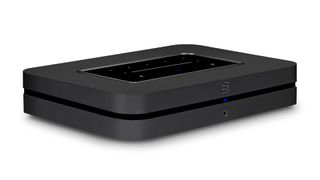
But – and it’s a pretty big ‘but’ – the Node is able to offer a convincing reply to the Audiolab’s strengths. Einaudi’s deft strokes are more shapely – fleshed out and taking on a hint of warmth. Greater dynamic scrutiny, particularly at low levels, reveals more information not only about the notes being played but the way they are being played. And it’s the communication of such that makes the piece interesting to listen to.
Switch to Joni Mitchell’s River (With French Horns) [Blue Sessions] on her anniversary 50 Blue (Demos & Outtakes) album, and while the Bluesound isn’t able to relay every lilt we know is behind Mitchell’s wholesome delivery (as is to be expected at this kind of level), it convincingly soars with her vocals, better capturing the rawness of the recording’s bare-boned production too.
Feed the Node a rhythm, as we happily do with Nas’ The Message, and the Bluesound snaps into action, throwing itself into the lucid beat uninhibited and tightly knitting it together with the guitar pattern. His rap is forthcoming and expressive in the mix and there’s a natural sense of free-flowing dynamics to it and the accompanying instrumental. The Audiolab is agile and far from dull musically, but comparatively does sound polite. The newer Cambridge Audio MXN10, in turn, adds in a greater element of dynamic expression and rhythmic coherence.
Verdict
Bluesound has adopted this entertaining sonic character since its outset – not just in the Node but in its Powernode (essentially an amplified Node) and wireless speakers too – but here it’s presented with greater refinement and detail than in previous iterations to Award-winning effect.
When we originally tested the Node (2021), there was a dearth of competition around its price point. The leap between this model and the class-leading Cambridge Audio CXN V2 at the step-up mid-range price point is fairly significant, but we were happy to see (and hear) the third-gen Node push budget music streamers in the right direction.
While newer models have now arrived on the scene vying for its crown, at this money, the Bluesound Node (2021) remains one of the most capable and comprehensive ways of adding music streaming to your hi-fi system.
SCORES
- Sound 5
- Features 5
- Build 5
MORE:
Also consider the Cambridge Audio MXN10
Cambridge Audio MXN10 vs Bluesound Node: which budget music streamer is best?
Check out our round-up of the best music streamers
What Hi-Fi?, founded in 1976, is the world's leading independent guide to buying and owning hi-fi and home entertainment products. Our comprehensive tests help you buy the very best for your money, with our advice sections giving you step-by-step information on how to get even more from your music and movies. Everything is tested by our dedicated team of in-house reviewers in our custom-built test rooms in London, Reading and Bath. Our coveted five-star rating and Awards are recognised all over the world as the ultimate seal of approval, so you can buy with absolute confidence.
-
Gray '...our biggest wish – whether reasonable or not for a streamer at this price point – would be a proper screen display'.Reply
I think your wish is reasonable. -
balespur Great review, good to see bluesound is keeping their products at the cutting edge at this level in the market.Reply
Please review the new soundbar+ (which now has atmos) and updated Powernode! -
ScottC It would be very helpful to know in future reviews if you test streamers through the digital or analog output. It would be nice to know if the DAC is being reviewed as well, or better yet, comment on both sides. I recall another reviewer mentioned that the Node and CXN V2 sounded very similar through the digital output. I'd love to upgrade my original Node 2, I guess I'll have to get my hands on one myself to compare.Reply -
GregorySD Reply
They are using the internal DAC. It's quite frustrating, the other reviews I have found on the new Node also do not asses the digital output. I am preparing to upgrade my system which includes a Node 2i. I can tell you that my DAC, a Benchmark DAC1 Pre (11 years old) handily beats the Node 2'is DAC, MQA or not. I would use the HDMI Arc on the new Node, so it's attractive from that standpoint but I have the same question as you. How good is the digital out? My guess it's pretty good, especially for the money, but I am left to buy components to evaluate on my own which is always costly. Will the Node truncate the gains brought by an upmarket DAC? Maybe, maybe not. It does not have USB out which is limiting though.ScottC said:It would be very helpful to know in future reviews if you test streamers through the digital or analog output. It would be nice to know if the DAC is being reviewed as well, or better yet, comment on both sides. I recall another reviewer mentioned that the Node and CXN V2 sounded very similar through the digital output. I'd love to upgrade my original Node 2, I guess I'll have to get my hands on one myself to compare. -
ChrisJ It should be noted the Node has crippling issues with it's BlueOS apps. The player intermittently will not be detected in iphone, ipad and windows desktop app. I sometimes have to have all 3 devices open to see which one I can detect the device from to play music. I worked with BlueSound tech support who concluded that this is a known issue that "will be addressed in the future with a firmware update" which they cannot provide an ETA for. If you search online you can find their support crew promising similar updates for the same issue on the earlier Node almost a year ago.Reply
Have a look at the app store reviews for the BlueOS app. Horrid. When it works it's great, but I'm considering returning the Node as defective and looking for another hi-res streaming solution. It simply doesn't work most of the time from my phone. -
BVillet The Node has a major deficiency in that it does not support Chromecast. This greatly reduces the ability to explore musicReply -
Garth Vader Reply
"Like the two Nodes before it..."What Hi-Fi? said:Bluesound reasserts its authority in the budget music streamer market with a superbly featured natural-born entertainer.
Bluesound Node (2021) : Read more
1 Bluesound Node http://objects.designapplause.com/2014/node-powernode-bluesound/33987/2 Bluesound Node 2 https://www.bluesound.com/products/node-2/3 Bluesound Node 2i https://www.bluesound.com/products/node-2i/
I count three predecessors to the current iteration. The original Node was a bizarre-looking, somewhat bloated form factor, subsequently replaced by the essential box design that has been carried over to the present day. -
Garth Vader Reply
I suggest you consult Bluesound support. I had some connectivity issues at first but it was mitigated by working with BS support and today is entirely stable and 100% reliable. Owner of a Node 2 since it's release in 2017 and more recently a Node 2i module installed in a NAD M32.ChrisJ said:It should be noted the Node has crippling issues with it's BlueOS apps. The player intermittently will not be detected in iphone, ipad and windows desktop app. I sometimes have to have all 3 devices open to see which one I can detect the device from to play music. I worked with BlueSound tech support who concluded that this is a known issue that "will be addressed in the future with a firmware update" which they cannot provide an ETA for. If you search online you can find their support crew promising similar updates for the same issue on the earlier Node almost a year ago.
Have a look at the app store reviews for the BlueOS app. Horrid. When it works it's great, but I'm considering returning the Node as defective and looking for another hi-res streaming solution. It simply doesn't work most of the time from my phone.
BTW, my phone is old, an iphone 7 and my tablet is even older. Both function seamlessly with BluOS.
I don't know much about networks at all, to say the least, but the support tech went into my router software and established something they described as a fixed IP address, and my connection problems went away for good.
Note that everything in my system is connected to the switch by ethernet cable, as recommended by both the manufacturer and by any BS tech you will talk to. -
Redbone It's unclear to me whether the sound characteristics and limitations of the node are diue to its DAC or the player in general. It would be nice to have this clarifiedReply
